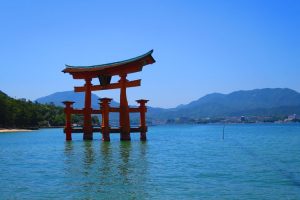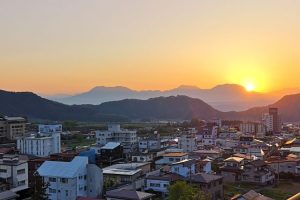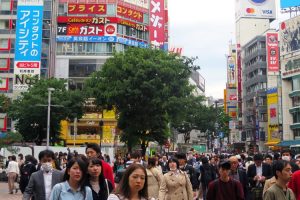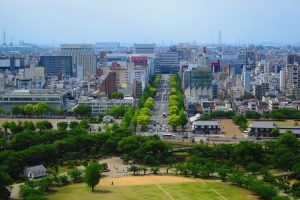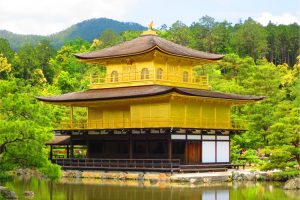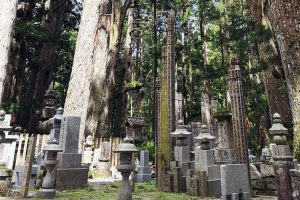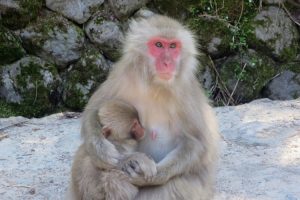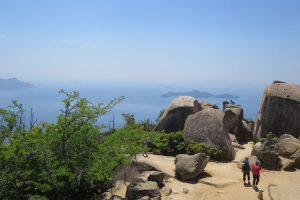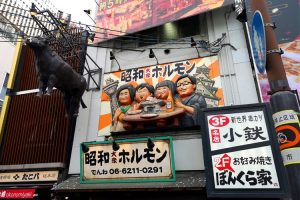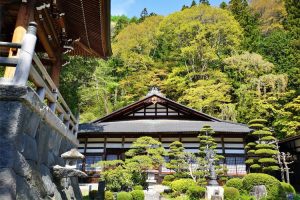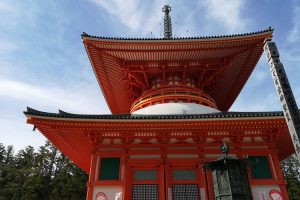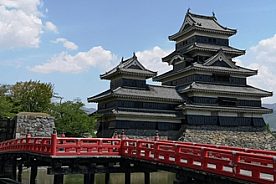
- Duration: 16 days from the UK
- Private Departures Available
Flight inclusive from £7295, Land only from £5975
Castles, temples, mountains and tea ceremonies - all the must-see sights and cultural experiences on this immersive guided tour of Japan.
Highlights
- Explore the cultural city of Kyoto, and the historic castles of Matsumoto and Himeji
- Take part in a tea ceremony in Kyoto and stay in traditional ryokan and minshuku.
- See the snow monkeys of Yudanaka Onsen
- Spend a night with the monks in a temple on Mount Koya
- Enjoy remarkable views of iconic Mount Fuji – weather permitting
- Visit Narai, one of the best-preserved post towns on the Nakasendo Trail
- Experience modern Japan; high-rise Tokyo, Hiroshima Peace Park, bullet trains and the neon lights of Osaka
Take a journey through Japanese history as you travel west from modern Tokyo, through the beautifully preserved villages of the Japanese Alps and scenic central heartlands to Hiroshima and Osaka. Perfect for the first-time visitor, this in-depth guided tour to Japan has been carefully designed to include all the must-see sights and experiences on Honshu Island including six UNESCO world heritage sites.
You arrive into the dazzle of Tokyo, Japan’s capital city, with its bright lights and futuristic nature. Here you explore the old and the new, take a walk through the Sumo district, and head out on a day trip to nearby Hakone for iconic views – weather permitting – of snow-capped Mount Fuji.
Heading north into the more tranquil Japanese Alps you visit a museum to view woodblock paintings by the master artist Hokusai Katsushika, watch the famous “snow monkeys” bathe in the hot springs at Yudanaka and step inside the imposing black and white walls of Matsumoto ‘Crow’ Castle, one of the oldest in Japan. From here you continue your Japan tour, travelling west to Narai, one of the best preserved post towns on the ancient Nakasendo Trail, enjoying glimpses of the snow capped Alps as you travel by train through the mountains. In historic Takayama you explore the quaint Sanmachisuji district, sample some saké and shop at the lively morning market, before continuing on to Kyoto and Nara – the cultural heartlands of Japan. Only a privileged few get to experience a genuine tea ceremony hosted by an elegant maiko (an apprentice geisha) as you will today in Kyoto, alongside visits to key cultural sights and a day-trip to Nara. The scenic Nankai railway brings you to Mount Koya, a mountain monastery home to over a hundred temples. Here you spend the night at a shukubo in a working Buddhist temple, joining the monks for prayers in the morning before visiting beautiful, UNESCO-listed Himeji Castle. Travelling on by bullet train you explore the modern city of Hiroshima and visit scenic Miyajima, a sacred island in the Seto Inland Sea.
Your Japan group tour concludes in lively Osaka where you enjoy a farewell meal and a chance to reflect on your wonderful experiences in the Land of the Rising Sun.
Private Departures
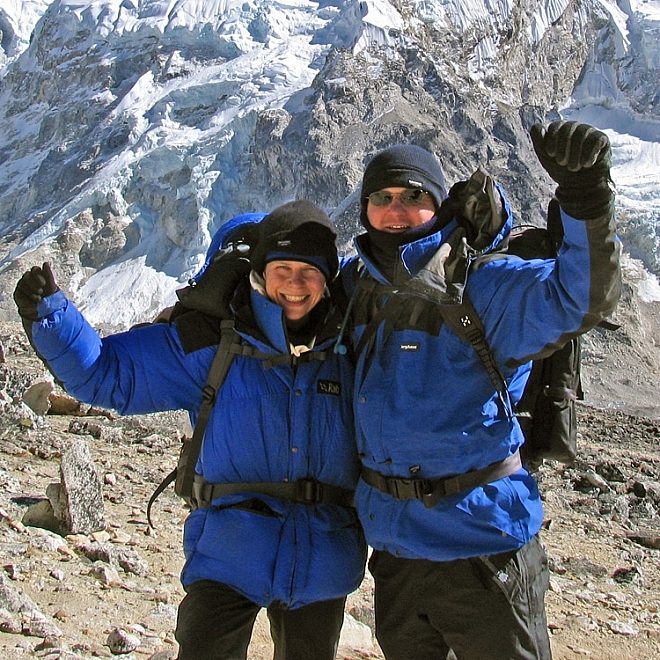
Definitive Cultural Tour of Japan - Private Departures
If you would prefer to travel just with your partner, friends or family, we can arrange a private departure of this holiday. You follow the same itinerary, but travel on dates that suit you. Alternatively we can include elements of this holiday in a bespoke Tailor Made itinerary. Contact our friendly team for details and prices, and to make a booking.
At a glance
Duration: 16 days from the UK
Private Departures Available
Guaranteed to run for a minimum of 5 clients
Maximum group size: 12
Accommodation types: Hotels, Ryokan, Minshuku, Temple
Meal arrangements: All breakfasts and 8 dinners are included. Lunch is not included and your guide will help you organise your lunches which may be picnics or meals taken in local restaurants or cafes.
Itinerary overview
| Day | Activity |
|---|---|
| 1-2 | (This is the mini itinerary for our 2024 trips. Detailed itineraries for all departures can be downloaded below). Fly to Tokyo. Transfer to hotel. Welcome dinner. |
| 3 | Excursion to Hakone for views of Mount Fuji. Cruise on Lake Ashi. |
| 4-5 | Tour of Tokyo. Transfer to Obuse, visit museum and sake brewery. Travel to nearby hot springs. |
| 6 | Train to Matsumoto. Visit castle. Continue train journey to Narai post-town. |
| 7-8 | Transfer by train and bus to Takayama. Explore local area and time at leisure. |
| 9-10 | Catch train to Kyoto. Walk through the Gion District, city tour and visit to Fushimi Inari. |
| 11 | Day trip to Nara with visit to Todaiji Temple. |
| 12-13 | Sightseeing and temple stay at Mount Koya. Transfer to Himeji. |
| 14-15 | Tour of Himeji Castle. Bullet train to Hiroshima. Sightseeing in Hiroshima and Miyajima. Train to Osaka. Evening tour and farewell dinner. |
| 16 | Transfer to Osaka airport and fly home. |
Leader: Local Leader, Japan
Your trip will be led by an English-speaking Japanese guide. They are all highly experienced, and will greatly enhance your experience on holiday. They will both guide you on the trail, and accompany you on all train and road journeys.
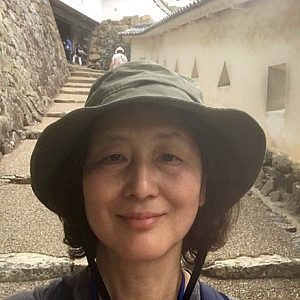
Holiday Itinerary
Day 1 - Fly London to Tokyo
Fly overnight London to Tokyo.

Day 2 - Arrive Tokyo. Transfer to hotel. Welcome dinner.
You fly into Tokyo where you will be met and join your shared taxi transfer to your centrally located hotel. In the evening you will head out to dinner at a local restaurant with your guide. Welcome to Japan!

Day 3 - Day trip to Hakone Mount Fuji area. Cruise on Lake Ashi.
You begin your Japan guided tour at one of the country’s most iconic landmarks, Mount Fuji. Designated a UNESCO World Heritage Site in 2013, Mount Fuji is also Japan's tallest mountain at 3,776m high. The hot spring area of Hakone, out along the Tokaido from Tokyo, is famed for its views of Mount Fuji, and today you will spend the day exploring the area and trying to catch a glimpse of Fujisan.
Mount Fuji is so emblematic of Japan that it appears in countless woodblock prints, paintings, and even public bathhouses in Japan. Travelling by train, cable cars and gondolas you will explore Hakone and also take a short cruise on Lake Ashi, or Ashi-no-ko. From the cruise you will be able to see views of Hakone-Jinja, and if you are lucky you will be have views of Mount Fuji over the waters. Please be aware though that clouds and poor visibility may obscure the view of Mount Fuji, and you have to consider yourself lucky if you get a clear view of the mountain.
The weather conditions mean that you should prepare to be flexible today, and in the event you cannot see Mount Fuji, your guide will manage the itinerary to cater for the interests of the group. For example, you may be able to peruse Hakone-Yumoto filled with many craft and souvenir shops. In particular you may see items of Yosegi-zaiku, a form Japanese marquetry originating in the Edo period. This commonly comes in the form of puzzle boxes which are traditional to Hakone and make a lovely souvenir. Also, there may be the chance to visit Hakone Gongen: standing at the base of Mt Hakone the shrine is hidden in dense forest. As you make your way along the path lined with lanterns, the shrine emerges surrounded by tall 600 - 800 year old cedar trees. The shrine used to be a place of worship for prominent warriors and is now open to the public. Finally, you may visit kyukaido suginamiki, located only a short walk away this historic and preserved segment of the old Tokaido road is lined with 400 year old cedar trees soaring towards the sky.

Day 4 - Sightseeing in Tokyo.
There are a number of fascinating sightseeing activities today on your Japan tour itinerary including a river cruise.Your guide will determine the best order to take in the sights according to local transport arrangements.
Hama-Rikyu gardens: This wonderful garden was orignally a falconry ground and has had many incarnations since including a recreational ground for the 6th Shogun. It is now open to the public and the calm and serenity offers a welcome contrast to the surrounding concrete jungle.The gardens include a grove of plum trees, a peony garden, flower fields and a teahouse.
Cruise along the Sumida River: Tokyo, a city famed for its vibrant streets and rich history, also boasts a lesser-known aquatic side. The waters of the Sumida River are not just a busy trade route but also home to the 'suijo bus' or water buses. You will enjoy a scenic boat journey along the river from Hinode port to Asakusa port. Along the way you will take in the views of Tokyo landmarks such as Tokyo Skytree, Rainbow Bridge, and the unusually-shaped Asahi Group Headquarters Building, among many others.
Ryogoku District You will explore the Sumo district of Tokyo, Ryogoku. The sport of sumo wrestling has been around for over 1,500 years. However, it was in 1909 that the first sumo stadium was built, with the 4th constructed in 1985. The stadium is able to seat over 10,000 spectators and hosts annual tournaments. It is also home to the Sumo museum, which aims to preserve the rich history of Japan's national sport. You will also have a chance to walk around the district passing by the Sumo stables also known as Heya, a place where the wrestlers live and train.
The Grand Meiji Shrine and Mitsukoshi Ginza Surrounded by a forest of over 100,000 trees the shinto shrine is dedicated to the 19th century Emperor Meiji and Empress Shoken. During the New Year period, nearly 3,000,000 people visit but for the rest of the year it is a very peaceful place. Continuing on you will head to the Mitsukoshi store in Ginza, the oldest department store in Tokyo, where you may be able to sample some of the amazing food on offer.
Tokyo Tower (if time permits) Standing 333 meters high in central Tokyo, Tokyo Tower is the world's tallest, self-supported steel tower and 3 metres taller than its model, the Eiffel Tower. Opened in 1958, it became a symbol of Japan's post-war rebirth as a major economic power. Thanks to the tower's central location, the observatory offers a fantastic view of the city. You can get a bird's eye view of Tokyo and, when visibility is good, you can see the Tokyo Skytree and Mount Fuji in the distance. The tower's main deck is at 150 meters and the high top deck is at 250 meters. Please note that the entrance fee to the tower must be paid locally if you wish to visit either of the observation decks.
During the day you will travel by train and underground and have time to explore areas on foot with your guide.

Day 5 - Travel to Obuse. Visit the Hokusai-kan museum and a sake brewery. Continue to the hot springs at Yudanka Onsen to see the ‘Snow Monkeys’.
Today your main luggage will be couriered to Takayama. An earlier start today as you travel to Obuse in the Nagano Prefecture northwest of Tokyo and your first chance to experience a high speed bullet train. As you reach a speed of 150 mph the city rushes past and you make your way out through the suburbs until a more rural Japan emerges, with fields all around and mountains looming in the distance.
After 90 minutes you disembark at Nagano and take a short local train ride to the small, attractive town of Obuse. Here you get your first real views of the snow-capped mountains of northern Shinano which provide a scenic backdrop to the town. Obuse was home to the artist Hokusai, famed for his woodblock prints and paintings which include the internationally renowned 'The Great Wave'. Hokusai lived in Obuse in his later years where he was known as the "old man mad about painting". During these years he created a number of masterpieces which can be found on display at the Hokusai-kan Museum which you will visit. There will also be time in Obuse to visit the Matsubaya Honten Sake Brewery. The brewery is over 200 years old and has a tasting room.
After lunch you continue by local train to Yudunaka Onsen, a hot spring village famous for its 'snow monkeys'. The Japanese macaques originally came here to warm themselves in the outdoor hot spring bath during the cold winters, and now come all year round.
Tonight's accommodation will be your first chance to experience a traditional Japanese room. With tatami mat floors the rooms are minimalist yet elegant. Remembering to take your slippers off before entering, you slide open the wooden doors to reveal the bedroom. A low table is placed in the middle of the room, and traditionally one would sit on a pillow whilst taking green tea, however now low chairs have been provided to give back support. You may notice that your bed has not been made, do not worry, this will be prepared as you have dinner and your futon will be ready on your return. Your ryokan will provide cotton robes, warm jackets, slippers, towels, toothbrushes and paste, soap, shampoo and conditioner. It is normal to wear the cotton robes to eat dinner in, relax in your room and even wear outdoors, so you really can travel light.
This evening there is the chance to try a nice relaxing Japanese Onsen (hot spring bath) in your ryokan before dinner. Traditional multi course dinners in the ryokans and minshuku are a sight to behold. There are many small and intricate dishes provided giving a large array of different foods and tastes. The main staple is sticky rice which will also be joined by miso soup. The rest will depend on the area you are staying and the local delicacies, but may consist of fresh and dried fish, Hida beef as well as mushrooms, pickled vegetables and a fresh desert.

Day 6 - Train to Matsumoto. Visit castle. Continue by train to Narai post-town on the Nakasendo Trail.
As the sun rises and warms the snow-capped peaks you enjoy a typical Japanese breakfast and then take the train to Matsumoto. Your journey takes you through apple orchards and grape plantations until after three hours you reach the city of Matsumoto and disembark to visit the beautiful black 16th century castle. With three turrets, six ornate floors and authentic wooden interiors, Matsumoto Castle is justly designated as one of the 'National Treasures of Japan'. It was built at the beginning of the Eisho era and is over 400 years old. After exploring the castle and taking in the panoramic views from the top there will be time to explore the gardens and maybe buy a souvenir before you board your next train to the small town of Narai in the Kiso Valley.
Narai is a charming post town on the ancient Nakasendo way - literally 'the path through the mountains'. It marks the mid-point between Kyoto and Tokyo and during the Edo feudal period was the wealthiest of the many post-towns where travellers stopped to rest their weary feet
Narai retains much of its historic charm with wooden buildings lining the 1km main street which is the longest in Japan's post towns. You will walk a short section of the Nakasendo Trail before making your way along the main street to your traditional minshuku accommodation - a small family run guesthouse. Once again cotton robes and slippers will be provided and most guests will wear these in the evening.

Day 7 - Visit to old coffee house. Travel by train and bus to Takayama.
This morning after breakfast you will have the chance to visit a 180 year old coffee shop where the coffee is brewed in a traditional way, you may wish to buy coffee or just enjoy the wonderful atmosphere. A great way to start the morning! You may also be able to visit the Narai Kiso-no-Ohashi bride, a beautiful bridge constructed of cypress trees before catching the train along the Kiso Valley to Takayama.
Although it has expanded in recent years the small city of Takayama, gateway to the northern Japan Alps, has retained much of its traditional architecture and is well-known for its crafts, particularly yew-wood carving, Shunkei lacquerware, pottery and furniture. After arriving at your ryokan (traditional style inn), there will be time to relax in a hot-spring bath before dinner. Tonight's multi course meal will include Hida beef, a regional delicacy.

Day 8 - Morning sightseeing in Takayama including a visit to the Kusakabe Mingekan Folklore Museum. Time at leisure.
Today you have a full but relaxed day in Takayama, starting with a visit to the morning market. Run by the women of Takayama, the small market lies by the river and offers fresh produce as well as small trinkets and souvenirs. Sanmachi Suji - the three main streets that comprise the heart of the historic Old Town - has rows of old merchant houses which date back to over 300 years ago when the city was an important Edo merchant town. Some of the houses open as small museums including the fascinating Kusakabe Mingekan Folklore Museum which you will visit. It has been designed to represent a townhouse of the Edo period with many interesting exhibits from the time.
In the afternoon there will be free time for you to wander at leisure and maybe hunt for special treasures to bring home. This is a great place for handicraft shopping with everything from handmade wooden clogs to intriguing red Sarubobo dolls available.

Day 9 - Time in Takayama. Transfer by train to Kyoto – 3 hours. Walk through the Gion District. Tea ceremony with apprentice Geisha.
You have a relaxed start this morning with time to explore Takayama further. You may like to visit the Takayama Float exhibition hall where you can view some of the floats that are used in the Takayama festival Matsuri. The festival began around 350 years and as the town grew so did the floats becoming more and more magnificent. When not in the museum the floats are housed throughout the city.
A lunchtime train will carry you through the rice paddies to your next stop, Kyoto, where you head out into the city. Here you explore the small streets awash with tiny glowing lanterns and scented with the heady smell of Japanese cuisine. The Gion district is famed for its many Ryotei - exclusive private restaurants, and you will also visit the Sanjo-ohashi Bridge, the western end of the Nakasendo Trail.
Kyoto as the cultural capital of Japan is home to the three tea ceremony schools, and the highlight of today is a special tea ceremony with a maiko (apprentice geisha). Most visitors are lucky if they catch a passing glimpse of a genuine geiko (the local name for a geisha) and/or maiko whilst in Kyoto, making this experience even more special. The formal tea ceremony, or the Way of Tea, dates back to the 16th century and is rooted in Zen Buddhist philosophy. It is one of the classical arts of refinement which the maiko will learn as part of her geisha training. The ceremony follows simple rules but there is a strict etiquette to be observed - this is a not a relaxing cuppa, more a spiritual process. The rest of the evening is free for you to explore or try one of Kyoto's many restaurants. Please note that your main luggage will be couriered to Kyoto today.

Day 10 - Morning tour of Kyoto. Afternoon visit to the Fushimi Inari Shrine.
A great breakfast is followed by a full day of sightseeing in and around Kyoto.
Your day starts with a visit to the famous Kinkaku-ji, the beautiful golden pavilion whose top two floors are completely covered in gold leaf. In 1397 Ashikaga Yoshimitsu, the third shogun of the Muromachi period bought the land here and built a villa on it for rest and contemplation. The villa was used as a guest house for emperors and other members of nobility until after Yoshimitsu died when, as per his wishes, it was converted into a temple. In 1994 the temple was registered as a UNESCO World Heritage Site. Next you walk a short distance to Ryoanji to view the famous rock garden of raked gravel and fifteen moss covered boulders.
Crossing Kyoto by train you make your way this afternoon to the Fushimi Inari Shrine, with its many vermilion torii gates and photogenic walkways. You will find the first, much photographed section of the path busy but as you snake your way up the hillside through the gates the crowds start to clear and towards the top you will enjoy fantastic views over Kyoto. The torii gates are donated by those offering thanks for making a wish come true or seeking prosperity. Your luggage will be waiting for you when you return to your hotel.

Day 11 - Train to Nara including Todai-ji Temple and Nara Park.
This morning you will take a day trip from Kyoto to Nara, only an hour away by train. Nara was the first permanent capital of Japan, before Kyoto, in the period between 710 and 784. The city has plenty of UNESCO historical treasures but your first stop is Todai-ji, which with its vast temple building and large bronze Buddha is one of Japan's most famous temples. The elegant wooden structure is said to be the largest in the world, and the grounds of the temple are also home to a large number of wild deer who roam the area freely and are tame. You return to the centre of town for lunch, and should have time afterwards to visit the old merchant quarter where you can explore the narrow streets with their little shops and cafes.
Back in Kyoto you have the evening at leisure, your last night here before a change of scenery at Mount Koya.

Day 12 - Scenic train ride to Mount Koya. Walk through the Okuno-In Cemetery.
We will send your luggage ahead this morning to Himeji while you travel with just your overnight essentials on the the scenic journey by train and cable car to Mount Koya, ascending through a valley filled with cedar trees high up in the mountains of the Kii peninsula. Sacred Mount Koya has been a place of religious devotion and ceremony since the 9th century and there is a real contrast between here and Kyoto.
There are now more than 100 monasteries in Mount Koya, a number of which have special accommodation for pilgrims. Tonight you will stay in one of these temple shukubo. After you drop your bags off here you head to the vast cemetery of Okuno-in for a guided walk through the thousands of graves and memorials dedicated to feudal lords and other past luminaries. Interestingly it is also a place to remember the more recently deceased and many companies such as Nissan and Panasonic have their own memorials. Towards the far end of the cemetery is the Gokusho Offering Hall where visitors throw water over a row of statues, praying for family members who have passed. Finally you come to the most sacred mausoleum in the cemetery, Kobo Daishi's Tomb, which is sealed behind doors.
Outside the cemetery you visit the Shingon Buddhist shrine of Kongobuji which has the largest sand and rock garden in the whole of Japan; one hundred and forty granite stones have been carefully positioned arranged to represent two dragons in a sea of clouds.
Returning back to the Shukubo you will have some time to take a hot spring bath and relax in the robes and slippers provided, before your evening meal. Tonight's delicious temple meal will be vegetarian in keeping with Buddhist philosophy.

Day 13 - Morning prayer service. Visit Kongubu-ji Temple. Bullet train to Himeji.
This morning we recommend you to rise early for the prayer service at your shukubo. This is a fascinating, almost meditative experience where you sit and silently observe as the monks chant their morning prayers for around an hour. There may also be a short explanatory talk afterwards
After a shoji ryori - Buddhist vegetarian - breakfast there is time this morning for further exploration of Mount Koya, maybe to see the red Konpon Daito pagoda or explore the Danjo Garan temple complex, before you travel onwards to Himeji via Osaka.
Himeji is a large city famous for its magnificent castle, which you will visit tomorrow. The castle is one of the finest surviving examples of early 17th-century Japanese architecture, and was Japan's first UNESCO World Cultural Heritage Site.

Day 14 - Visit to Himeji Castle. Bullet train to Hiroshima. Visit Peace Memorial Park and Museum.
For the final time your main luggage will be couriered, and will be waiting on your arrival at your hotel in Osaka tomorrow.
This morning you visit Himeji Castle, known as the "White Heron" Castle for its walls covered with white plaster which resemble a heron in flight. Himeji Castle is famous for both its huge main tower and its maze-like design. The castle has recently completed extensive restoration works. You will pass through the Hishi-No-Mon gate and take a guided tour of the castle. Throughout the tour you will observe the incredible beauty and detail of the castle from the vast gardens to the intricate ornamentation of the Gegyo; it really is a stunning site.
You then continue on by bullet train to Hiroshima. Known throughout the world as the first city to suffer the impact of atomic weapons, today Hiroshima is a vibrant, modern city. Throughout the Peace Memorial Park are a number of touching memorials, including the Children's Peace Monument, festooned with brightly coloured strings of origami cranes, left by children from all over the world to express a desire for peace. The Peace Memorial Park and Museum provides context to the impact of the bombing on the city, the country and the world. You will be able to see the A-Bomb Dome, the only structure that was left standing in the hypocentre of the bombing. Within the museum there are many different artefacts and works of art providing context and stories of those who suffered at the time of the bombings. The museum experience is undoubtedly extremely sobering but also reflects the resilience of Hiroshima and its people.
If you prefer not to visit the Peace Memorial Museum and Peace Park there is still plenty to do and see in Hiroshima, from the bustling downtown area to the Shukkeien sunken garden which dates back to 1620.

Day 15 - Train and ferry to Miyajima Island. Sightseeing. Train to Osaka. Evening tour and farewell dinner.
This morning you travel by train and ferry to the sacred island of Miyajima, one of the most scenic spots in Japan. Here you will stroll along the waterfront and view the famous floating Great Torii and the Itsukushima Shrine. As in Nara there are a number of free roaming deer on the island which are considered to be sacred messengers of the gods. There is a cableway up to Mt Misen (optional), the highest peak on the island, which you may like to take for fantastic panoramic views from the top on a clear day. Or enjoy strolling the streets and visiting the traditional shops that line the route back to the ferry.
You depart the island mid-afternoon and travel back by train, arriving late afternoon/early evening at the hotel in Osaka. You then venture out into the thick of the bright lights and hustle and bustle of Osaka - the very epitome of modern Japan. It is considered to be the commercial hub of the country. The evening tour of the Dotonbori will overload your senses; with its numerous restaurants, delicious aroma of fresh food and quirky signs, it really is a haven for foodies. It is also the perfect place to conclude your tour with a final farewell dinner.

Day 16 - Transfer to Osaka airport. Fly to London.
Time to bid goodbye to Japan as you transfer to the airport for your flight home.
Please note that there are normally two daily flights back to the UK: an early morning flight, arriving back in the UK on the same day, and an overnight flight. If booked on an overnight flight, you will have time at leisure this morning before an afternoon transfer to the airport. You will then depart Japan this evening and arrive back in the UK tomorrow.
Loading...
Hold your place
Not quite ready to book? Why not call us on +44 (0) 1453 844400 to hold a no obligation place while you make up your mind?
Optional supplements
-
Single Room Supplement
From £1065
No Surcharge Guarantee
No surcharges will be applied to your holiday after you book. Prices on this website are updated regularly. The Flight Inclusive holiday price, or Land Only holiday price, will be confirmed to you at the time you make your booking. There will be no surcharges after your booking has been confirmed.
Flight inclusive holidays
The 'flight inclusive' holiday prices shown on this website are based upon our preferred airlines and the best priced economy class fares we are able to secure at the time of publication.
We will be able to advise on fares with alternative airlines, upgrades to Business Class, and the options for flights from regional UK airports, please contact us for more details.
Booking your holiday
-
Deposit
From £400.00
For the majority of our holidays, a deposit payment of £400.00 per person is required to secure your place(s), however a small number of holidays require a higher deposit - please refer to the holiday itinerary for more details. If the holiday departs within 60 days, a deposit of £1,000.00 per person is required.
Book now!
- Book your small group holiday securely online – click the ‘Book’ button next to your chosen departure or visit our How to Book page
- Complete and return a Booking Form available to download here.
- Call us on +44 (0)1453 844400 and one of our travel specialists will talk you through the booking process.
What’s included
- An English-speaking Japanese leader
- Economy class return air fares from the UK & UK Departure Tax (flight inclusive only)
- Shared taxi airport transfer for international flights on arrival and limousine bus on departure
- Good standard hotel accommodation in the main towns on a twin-share basis
- Staying in traditional minshuku, ryokan and shukubo (temple), on a twin-sharing basis, in outlying places
- Baggage transfer service so you will have you baggage with you for all except five nights when you stay in traditional accommodation where robes and slippers (expected attire) are provided
- All breakfasts and 8 dinners
- All transport by private vehicles, buses, ferries and trains (bullet and local)
- Sightseeing and activities where specified in this Japan tour itinerary
- Carbon offsetting with the Ecoan Tree Planting Project (for clients taking our flight inclusive option)
- A free Mountain Kingdoms Water-to-Go bottle
What’s not included
- Visa fees for Japan
- Lunches and 6 evening meals
- Travel insurance
- Tips
Read holiday reviews by Mountain Kingdoms travellers.
Overall score: 4.75 (Based on 4 reviews)
The programme for this cultural tour is excellent, with a range of experiences from watching Sumo wrestlers at their daily training, to spending the night in a Buddhist shrine, where we attended their prayers at daybreak. From a mountain trip to watch macaque monkeys playing in the snow, to boat trips on Lake Ashi, where we saw Mount Fuji, and to Miyajima Island to admire the stage setting for the No theatre productions. We returned truly different - with so many unique memories, really healthy after the cuisine. and mindful that a holiday can make such a difference. This was a holiday to bear comparison with any other in the pantheon of outstanding experiences. We both thank you as the originator of this trip. You had the imagination to appreciate what it could be, and the efficiency to realise the dream so effectivley. You can be proud of your work!
All the Japanese people were unfailingly friendly, helpful and polite.
We enjoyed the variety and comprehensive experience of Japan, it's history and culture.
This Japan culture tour is a fantastic experience, whether it is your first trip or not. With its varied itinerary, this trip sets to hit all of the main spots as well as those that many tours don’t get to see. Japan really is a country that keeps on giving.


